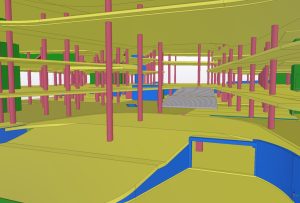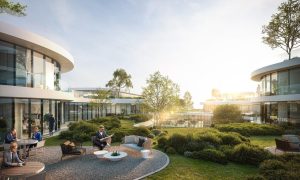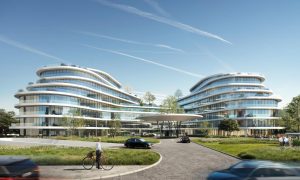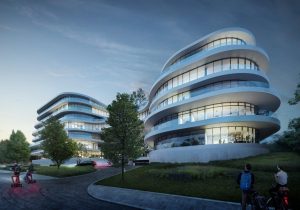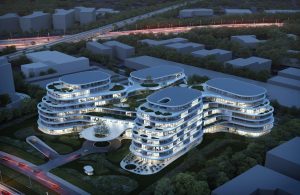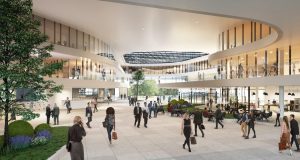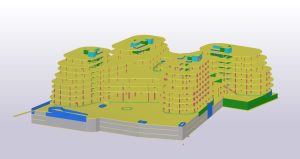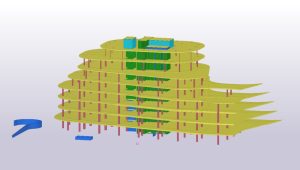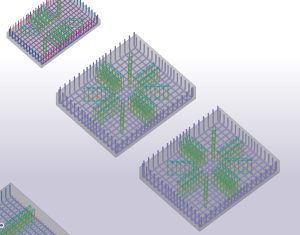The Wings
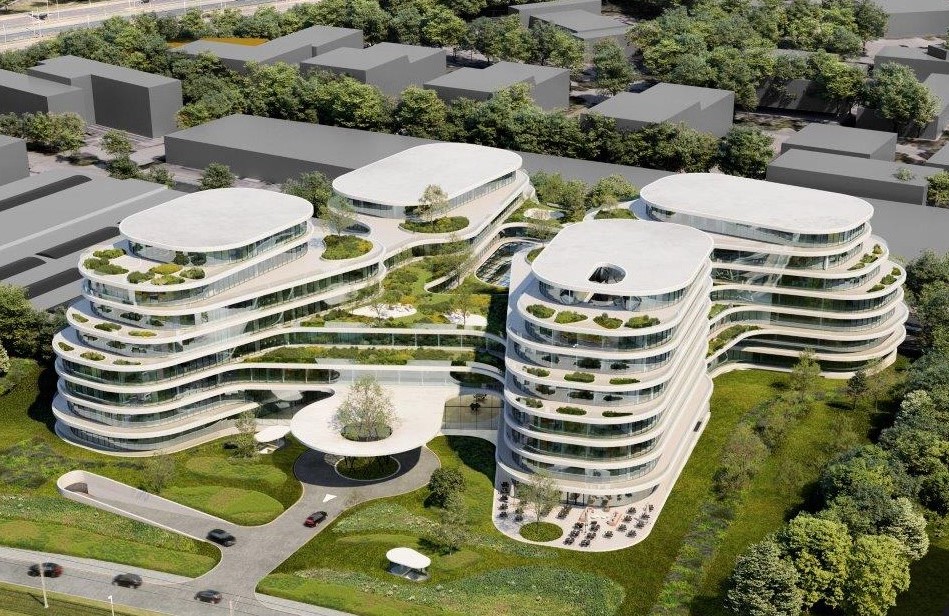
| Kategoria | Projekty komercyjne |
|---|---|
| Rok | 2023 |
| Kraj | Benelux |
| Organizacja | Macobo-stabo |
| Partnerzy projektu | Assar Llox Architects, Democo |
| Autor | Wim Wuyts, Steve Witczak |
| Współautorzy | Lies Saelens |
| Klient | Ghelamco Invest |
| Miejsce budowy | Diegem |
| Tags |
The Wings, Diegem – Macobo Stabo
The Wings in Diegem is een uniek concept dat maar liefst 100.000 m² omvat aan kantoorruimtes, een hotel, een fitness, restaurants en co-working faciliteiten. Dit zal het eerste gebouw in België zijn dat drievoudig gecertificeerd is met BREEAM excellent ****, WELL gold certification en DGNB gold certification. The Wings wordt een geavanceerde duurzame omgeving waarbij werk en welzijn volkomen met elkaar in balans kunnen zijn. Voor deze constructie werd er een slimme en energie-efficiënte infrastructuur ontwikkeld zodat er tijdens de exploitatie van het gebouw geen enkele fossiele brandstof verbruikt wordt. De oplevering van het gebouw is voorzien in het najaar van 2023.
Het structuurmodel werd opgebouwd in Tekla Structures en bestaat voornamelijk uit betonconstructies, in totaal meer dan 50.000 m³. Het modelleren van de unieke organische geometrie van The Wings vormde een ware uitdaging. De afgeronde vormen manifesteerden zich in de vloerplaten, in wanden en in balken. Doordat de vloerplaten variëren in dikte op eenzelfde niveau werden deze elementen opgesplitst in meerdere kleinere en meer hanteerbare segmenten.
Tijdens het ontwerp en de uitvoering werd er erg ingezet op BIM. Het structuurmodel en het architectuurmodel werden volledig op elkaar afgestemd en werden ook tijdens de uitvoering nog bijgewerkt. De coördinatie tussen technieken en stabiliteit gebeurde volledig intern binnen het studiebureau Macobo-stabo. Het instorten van waterafvoeren in kolommen is hierbij opmerkelijk. Bovendien werd tijdens de uitvoering van het project ook gebruik gemaakt van Trimble Connect als platform voor communicatie met onderaannemers.
De bekistingsonderdelen werden gemodelleerd tot een detailniveau LOD300. Bovendien werden heel wat elementen naar uitvoering toe naar een LOD400 gebracht. Zo werden funderingsmassieven- en platen, ter plaatse gestorte wanden en kolommen volledig uitgewapend in Tekla Structures. Voor deze onderdelen werden nadien afzonderlijke betontekeningen gegenereerd om de wapening weer te geven.
The Wings, Diegem – Macobo Stabo
The Wings in Diegem is a unique concept that includes no less than 100,000 m² of office spaces, a hotel, fitness, restaurants and co-working facilities. This will be the first building in Belgium to be triple certified with BREEAM excellent ****, WELL gold certification and DGNB gold certification. The Wings will be an advanced sustainable environment where work and well-being can be perfectly balanced. For this construction, a smart and energy-efficient infrastructure was developed in order that no fossil fuel is consumed during the operation of the building. The building is scheduled for completion in the fall of 2023.
The structural model was built in Tekla Structures and consists mainly of concrete structures, altogether more than 50,000 m³. Modeling the unique and organic geometry of The Wings presented a real challenge. The rounded shapes manifested themselves in the floor slabs, in walls and in beams. Because the floor slabs vary in thickness at the same level, these elements were divided into several smaller and more manageable segments.
During design and construction, BIM was deployed. The structural model and the architectural model were fully aligned and were also updated during execution. The coordination between techniques and stability was done entirely internally within the Macobo-stabo engineering office. In this regard, the collapse of water drains in columns is noteworthy. Moreover, Trimble connect was also used as a platform for communication with subcontractors during project execution.
The formwork elements were modeled to a detail level LOD300. In addition, many elements were brought to a LOD400 toward execution. Thus, foundation massifs and slabs, on-site poured walls and columns were fully reinforced in Tekla Structures. Separate concrete drawings were subsequently generated for these components to show the reinforcement.

